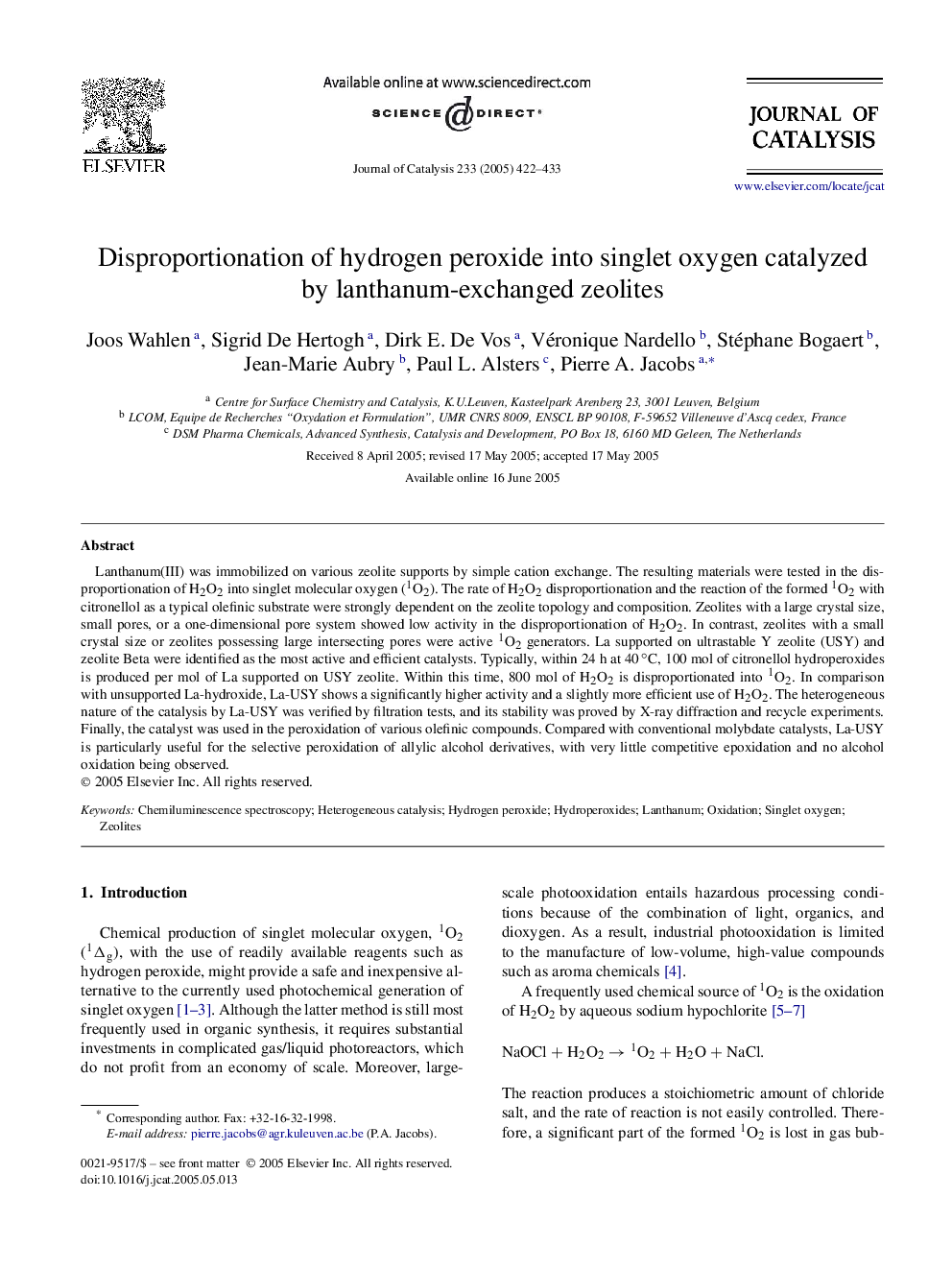| Article ID | Journal | Published Year | Pages | File Type |
|---|---|---|---|---|
| 10244488 | Journal of Catalysis | 2005 | 12 Pages |
Abstract
Lanthanum(III) was immobilized on various zeolite supports by simple cation exchange. The resulting materials were tested in the disproportionation of H2O2 into singlet molecular oxygen (1O2). The rate of H2O2 disproportionation and the reaction of the formed 1O2 with citronellol as a typical olefinic substrate were strongly dependent on the zeolite topology and composition. Zeolites with a large crystal size, small pores, or a one-dimensional pore system showed low activity in the disproportionation of H2O2. In contrast, zeolites with a small crystal size or zeolites possessing large intersecting pores were active 1O2 generators. La supported on ultrastable Y zeolite (USY) and zeolite Beta were identified as the most active and efficient catalysts. Typically, within 24 h at 40â°C, 100 mol of citronellol hydroperoxides is produced per mol of La supported on USY zeolite. Within this time, 800 mol of H2O2 is disproportionated into 1O2. In comparison with unsupported La-hydroxide, La-USY shows a significantly higher activity and a slightly more efficient use of H2O2. The heterogeneous nature of the catalysis by La-USY was verified by filtration tests, and its stability was proved by X-ray diffraction and recycle experiments. Finally, the catalyst was used in the peroxidation of various olefinic compounds. Compared with conventional molybdate catalysts, La-USY is particularly useful for the selective peroxidation of allylic alcohol derivatives, with very little competitive epoxidation and no alcohol oxidation being observed.
Keywords
Related Topics
Physical Sciences and Engineering
Chemical Engineering
Catalysis
Authors
Joos Wahlen, Sigrid De Hertogh, Dirk E. De Vos, Véronique Nardello, Stéphane Bogaert, Jean-Marie Aubry, Paul L. Alsters, Pierre A. Jacobs,
